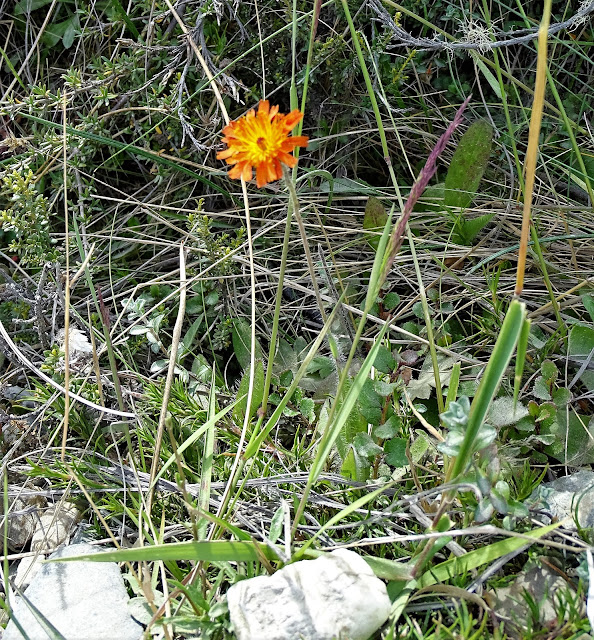Queenstown, New Zealand, is perhaps the premier destination in what is definitely a much loved country when it comes to tourists of all persuasions...which means it's a busy place. Even here at the top of the gondola, you can see dozens of people lunging with luges, helicopters landing after doing adventure rides. There are mountain bikers galore, bungy jumpers (although the one I photographed below was jumping a dozen or so miles away at the very Mecca of the sport where it originated) and of course a few mild-mannered flower loving hikers like myself and a handful of companions from the trip we're on at the moment...
I did not follow in Wonder Woman's bootstraps--this isn't a pastime for mild mannered flower lovers!
There is an extensive garden on the peninsula shown in the first picture--filled with some pretty remarkable trees. And a lovely rose garden...
Much of the mountain soaring above the city is muffled in dense forest of douglas fir--many surely over 100 feet tall. There are obvious efforts to reduce and perhaps eventually eliminate this forest...as noble as these very straight and tall trees may be, they have obliterated the native biodiversity wherever they grow--and the undergrowth is the horticultural equivalent of a bombed city, or perhaps just a slum of the most depressing kind. Not that I have an opinion about it!
Danger of fire is likely a factor in this: they've just experienced almost 3 months of virtually rainless weather...
Here you can see lush dark green Douglas fir on the left and in the distance. The extensive gray patch on the right was either burned or perhaps sprayed to kill the trees to keep them from spreading further in the alpine. The foreground and right show areas that had been cleared but which are full of young douglas fir seedlings. As we hiked further there were large areas of pristine "bush" with the occasional orange douglas fir (that had been sprayed to kill it)...very encouraging.
I was thrilled to find a Dracophyllum in bloom: these abundant and widespread shrubs are found throughout New Zealand and neighboring islands--sometimes forming small trees that much resemble Dracaena, which may be the origin of the Latin name. They were once classed as members of the Epacrid family, but are now considered Ericaceae...
And the flower can be construed as somewhat resembling some of the heaths in form...Being deliciously spiky, I'm enchanted with these...and find them delightful as well since almost precisely 100 years ago, the redoubtable Reginald Farrer conflated this genus with the Labiate genus Dracocephalum, the most humorous and egregious Homeric nod in the monumental English Rock Garden. You know you have to be a pretty recondite humorist to get a kick out of that!
 |
| Polystichum vestitum |
 |
| Blechnum penna-marina |
 |
| Gaultheria depressa var. novae-zelandiae |
 |
| Raoulia cf glabra |
This genus is one of the gems of the New Zealand flora--and one of the great treasures of rock gardens. I saw many in bloom in November, and heartened to see some still blooming in January.
 |
| Lycopodium fastigiatum |
 |
| Lophozonia menziesii |
As we were sitting among the Southern beeches relaxing, a lovely young Kiwi mountain guide stopped to chat and inform us that these were Silver beeches (Lophozonia menziesii). We took her at her word: this was near the limit of trees perhaps half way up the hike to Ben Lomond--a trek I would like to complete one day...not too hard if you start in the morning and take your time I reckon!
I've seen Nothofagus thriving in Newfoundland in the garden of Bodil Larsen and in Hamburg Botanic Garden. Is it too much to dream that we might grow these one day in Denver?
 |
| Wahlenbergia albomarginata |
 |
| Geranium sessiliflorum |
 |
| Hieracium aurantiacum |
 |
| Janet and Doug Davis |















Dear Panayoti - Lovely words indeed. But you have captured today’s adventure in such a timely manner, while I will need weeks to organize my photos (and thoughts). And thanks for all the identifications that I missed because I was lollygsgging behind you. No more nothofagus?? Drats!
ReplyDelete